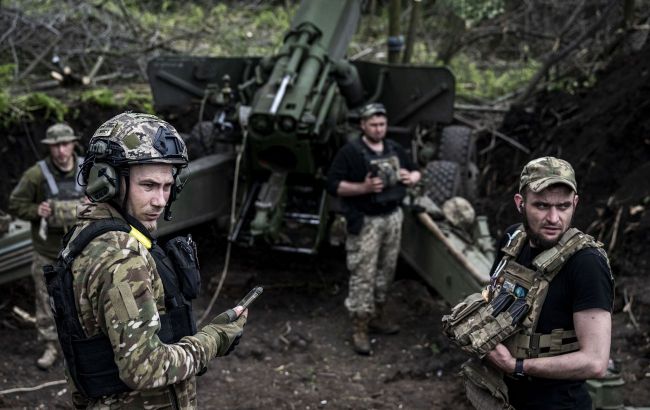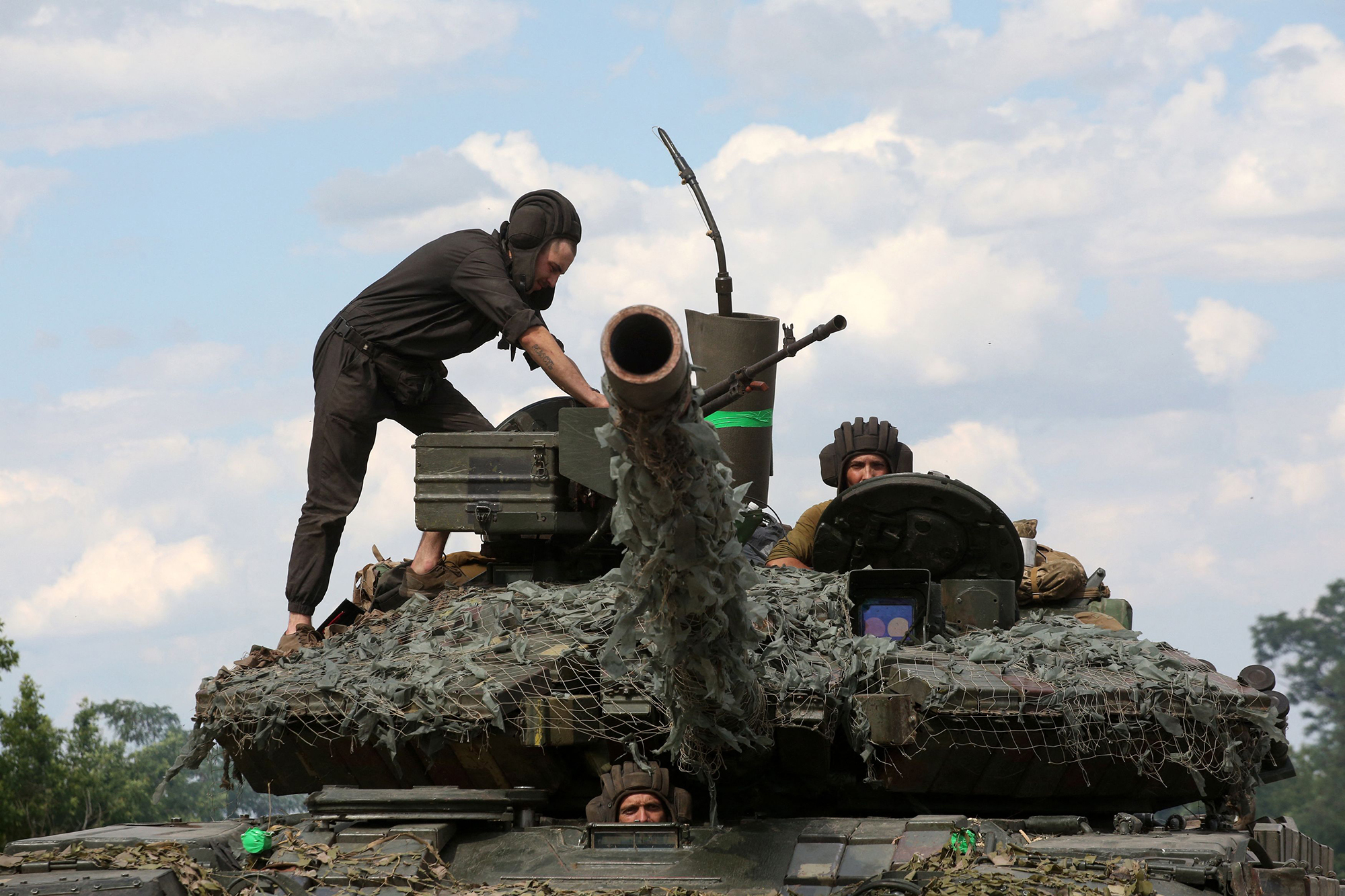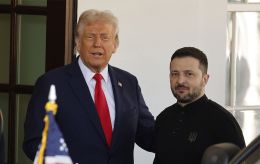Is the advance slow? What is really happening on the frontline and what to expect in the fall
 Ukrainian forces are currently engaged in "shaping operations" as part of their counteroffensive efforts in the south of Ukraine.
Ukrainian forces are currently engaged in "shaping operations" as part of their counteroffensive efforts in the south of Ukraine.
The Ukrainian army has liberated nine villages in a month since the start of the advance in the South. Western media reports that our operation is behind schedule and slower than planned. Therefore, Ukraine might allegedly be inclined towards ending the war soon. How likely is such a development and what is actually happening on the frontline?
The Ukrainian advance has been ongoing for several weeks. Initially, Defense Forces intensified their efforts on the flanks of Bakhmut, managing to swiftly halt the enemy's months-long advancement. And in early June, Ukrainian troops launched offensive actions in the southern operational zone.
Our movement in the Pryazovia region has been widely anticipated in Ukraine and the West. The expectations for this operation are significant. The evident objective is at least a breakthrough towards the Azov Sea and a way to Crimea.
Currently, Ukrainian military forces have managed to liberate 130 square kilometers of territory in the south. Doubts about the success of such progress are increasingly raised in Western media. Similar messages are now being voiced by official figures in the United States, suggesting that the advance is slower than expected. Ultimately, even President Volodymyr Zelenskyy acknowledged this.
Certainly, liberating nine villages in four weeks is not a particularly convincing outcome for those who expected the liberation of Melitopol or, even more so, our advance toward Crimea by this point. Howconcluding about the success or failure of our advance prematurely would be unwise. This operation is highly likely to be more complex and exhausting than it was in Kharkiv or even in Kherson. But at the same time, it will greatly determine the course or even the conclusion of the war.
Advance. Beginning.
Defense forces do not cease active operating on several fronts and have achieved local successes everywhere. In the Bakhmut direction, our military attempts to dislodge the enemy from the flanks to seize dominant heights around the city. Recently, the General Staff reported that the Ukrainian Armed Forces have cleared the western bank of the Siverskyi Donets-Donbas Canal near Kurdiumivka. If the Ukrainian army manages to break through to Berkhivka from the north and Klishchiivka from the south, leaving Bakhmut will only be a matter of time for the enemy.
After the departure of the Wagner group formations, the Russian regular army had difficulties holding its positions in this area. To prevent a Ukrainian breakthrough, the aggressor began to reinforce the area with reserves. After the destruction of the Kakhovka HPP, the Russians withdrew part of their forces from the left bank of the Kherson region and transferred them to Bakhmut. This, among other things, was also exploited by the Ukrainian army.
When the water receded, our forces, under artillery cover, sent a group of paratroopers to the left bank. The exact number of forces involved in this operation is not known. Currently, battles are taking place in the area of the Antonivskyi Bridge between Kherson and Oleshky. The Ukrainians have managed to establish a small bridgehead near the Konka River.
It is unlikely that our command plans to conduct any large-scale operation here, as providing logistical support for the airborne forces is an extremely challenging task. More likely, this direction can be considered as an additional one in the event of a breakthrough by our forces in the Zaporizhzhia region. And for now, it serves another important function - tying down enemy forces and preventing them from being redeployed to other threatening areas of the front, such as Pryazovia.
 Ukrainian troops conducting offensive operations on three front sectors in the south (Photo: Vitalii Nosach, RBC-Ukraine)
Ukrainian troops conducting offensive operations on three front sectors in the south (Photo: Vitalii Nosach, RBC-Ukraine)
There are three main directions of attack. One of them is near the Vasilivka settlement, where our units have liberated two populated areas - Lobkove and Pyatyhatky. Currently, fierce battles are taking place on the outskirts of the village of Zherebyanky.
Another direction is near Tokmak, where one of the main logistical centers of the occupiers in the Zaporizhia region is located. From there, it is potentially possible to advance toward Melitopol and Berdiansk. Ukrainian forces have managed to advance several kilometers to the village of Robotyne, where the first line of defense of the Russians stretches.
A more significant advancement has been achieved by the Ukrainian army to the east, at the junction of the Zaporizhzhia and Donetsk regions, in the area of Velyka Novosilka. This is the Berdiansk direction, where our military has already liberated seven settlements, including Rivnopil, as reported on June 26th.
The loss of this village worsens the occupiers' position since Ukrainian units gain the opportunity to move along the heights of the Mokri Yaly River. Currently, there are active operations taking place along the Pryiutne, Staromayorske, and Urozhayne lines. Following them, near the village of Staromlynivka, is the first line of defense of the Russian forces in this section of the front.
Despite our actions, the enemy does not give up attempts to advance in the areas of Lyman, Bakhmut, Avdiivka, and Maryinka. These attempts have been unsuccessful, indicating that the occupiers have exhausted their offensive potential. However, unfortunately, they still have enough resources for defense.
Can we call our advance a guaranteed success? There is no definitive answer to this question. Although the Ukrainian forces have been actively operating in various directions for over four weeks, this can only be considered the initial stage of the offensive. This is indicated, at least, by the fact that the command has not yet deployed the majority of brigades that were prepared in the West. The units currently advancing in the south seem to be conducting shaping operations and probing the weak points of the Russians.
Currently, there are battles taking place on the enemy's frontlines - in the supply area and near the first line of defense. On these frontlines, the Ukrainian army is trying to lure as many enemy reserves and artillery as possible for their subsequent destruction. It can be assumed that the command has chosen this plan for our advance in Pryazovia.
When the Ukrainian army attacks the Russian defense lines simultaneously in different places, it forces the enemy to prematurely activate more and more reserves, as they still do not understand if this is our main strike or not. The more of these reserves are destroyed in the initial stages of the offensive, the more the defensive potential of the occupiers will be depleted, especially when it comes to major battles. Why the emphasis is on artillery? Because it performs the majority of combat tasks in the current war.

Ukrainian army seeks weaknesses in enemy defense, and lures out reserves in the south (Photo: Getty Images)
Hypothetically, it would be possible to concentrate a significant portion of our troops on a specific sector of the front and rapidly break through the enemy's defense line. However, this would be predictable for the enemy - they would also redirect their main forces there and most likely repel the attack.
"So far, the pace and directions of our operation in the south give us reason to speak confidently about the success of our offensive actions. But war is not a linear graph, it involves considering many factors. Therefore, we should choose very cautious wording," says military analyst Colonel Serhii Hrabskyi.
Trapped by false expectations
The main difficulty for us lies in the fact that the Russians have indeed prepared well for our attacks in the south. Kostiantyn Mashovets, the coordinator of the Information Resistance Group, explains that the occupiers have constructed at least a two-tier defense system with a supply area, a first line of defense, a main line of defense, and operational troop formations.
"Specific forces and assets are allocated to reserves - tactical and operational. The supply area is usually heavily mined. Explosive barriers are installed there, snipers operate, and mobile anti-tank groups are active. Its main purpose is to disrupt the enemy's combat order before they reach the first line of defense," the expert explained.
Clearing paths in minefields is done under the threat of enemy artillery fire and attack helicopters equipped with anti-tank missiles. Traditionally, after the supply area, there may be two, three, or even four more lines of defense. Neither during the Kharkiv nor the Kherson operations did the Armed Forces encounter fortifications as well-prepared as these.
Kostiantyn Mashovets provided an assessment of the forces and assets that the occupiers had amassed in the Melitopol, Berdiansk, and Mariupol directions by the end of June. It amounts to approximately 92,000 personnel, up to 365 tanks, around 1,150 armored vehicles, up to 740 artillery systems, and up to 164 multiple launch rocket systems. Additionally, operational reserves are consisting of up to 3,500 military personnel, 15 tanks, 130 armored vehicles, 28 artillery systems, and 27 multiple launch rocket systems.
According to Hrabsky, the Ukrainian army is currently conducting offensive operations contrary to all operational art principles. We are advancing against a prepared enemy defense, and yet they are suffering more losses than the attacking side. Moreover, we don't even have a threefold advantage in forces and assets, as required by military science.
"What has been provided to us is insufficient for conducting offensive operations. Even if we had received everything we could have, we would still be conducting the same offensive actions because the enemy has practically put everything at stake," the expert believes.
Another important factor where Ukraine is currently losing to the enemy is the aviation component. We don't have an advantage in the air, particularly in the south. Therefore, providing cover for advancing armored vehicles in the open steppe during attacks is problematic.
"The ratio of our old aircraft to Russian aircraft is 1 to 6, and sometimes, it's 1 to 10. How can we conduct an offensive operation without objective conditions for its implementation and talk about its success or failure?" ponders Hrabskyi.
Under these circumstances, it is extremely important to maintain sober expectations and avoid hasty conclusions. The Ukrainian offensive is progressing gradually, and the major battles are yet to come. On the other hand, there is an opinion, which can be found in foreign media, that the window of opportunity for the Ukrainian army is not unlimited. In the fall, when maneuverability will be reduced due to bad roads condition on the front and the Russians will prepare for another series of strikes on energy infrastructure, our partners may demand some results from us. Otherwise, they will push for negotiations and the end of the war, even on unfavorable terms for us."

For the Ukrainian Army, it is important to show some progress to maintain the support of the allies (Photo: GettyImages)
Despite the continued declarations of support for Ukraine by leading Western countries, this version also has a right to exist. Ukrainian representatives of the military and political leadership have raised it in informal conversations with the publication. The main question here is what our allies will consider as a proper result.
"We are not hurried up, let's say, we don't need to liberate Melitopol by August or enter Crimea by September. Right now, it is important for us to show some progress - even if it's just a few hundred meters per day or the liberation of a single village," explained one influential source within military circles.
Another reliable expert explains that the United States is interested in weakening Russia as much as possible. As long as the Ukrainian army can continue fighting and liberating its territories, it aligns with the interests of the States. For this reason, they will not rush to end the war, forcing us into negotiations against our will. It is likely that another part of the current pro-Ukrainian coalition, particularly Western Europe, will also align with their position, albeit less categorically when it comes to compromise with Russia.
Furthermore, in a little over a year, presidential elections will take place in the United States, and the issue of the war will be on the agenda. By spending billions of dollars to support Ukraine, the Biden administration will need to demonstrate at least an intermediate victory. Otherwise, opponents like Trump will find ways to criticize the current president.
Therefore, our main task now is not to set unattainable goals. The key is for the Ukrainian army to be able to report some progress consistently until the fall so that there is no illusion that the front has frozen. According to the sources, this will be sufficient to maintain the partners' support and further liberate our lands.
However, it is important not to forget that in any scenario, there are always "black swans." One of them is the situation at the Zaporizhzhia nuclear power plant, as it is unclear whether the Russians will dare to carry out a terrorist act there and how the world will react to it.
Another one occurred just a week ago when there was almost a direct confrontation with Moscow. Yes, Putin managed to extricate himself from the crisis this time. However, the rapid advance of the Wagner Group toward the Russian capital showed that the authoritarian regime is shaking. And time is not on their side.
Even in the event of a successful coup, it is unlikely that a regime more friendly toward Ukraine will come to power. But at the very least, this disrupts the effective management of Russian forces or, in theory, Moscow may have to divert some troops from the front to quell internal fires. Furthermore, the new regime may want to start building relations with the civilized world from scratch, which could lead to a complete withdrawal of occupiers from Ukraine. Therefore, any turmoil and chaos in the Kremlin work in our favor.
Of course, it is clear that Prigozhin was not the main actor in this performance. It is evident that these were just the initial attempts. Hence, other dissatisfied actors with the distribution of power and policies in Moscow may try to repeat what has been started sooner or later.

